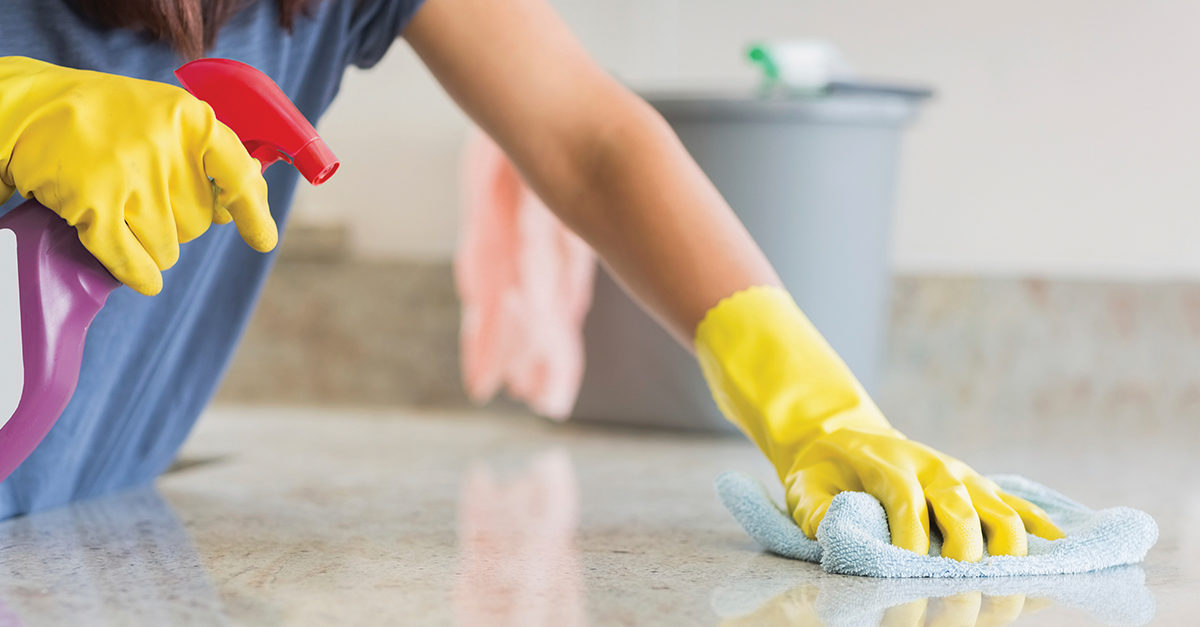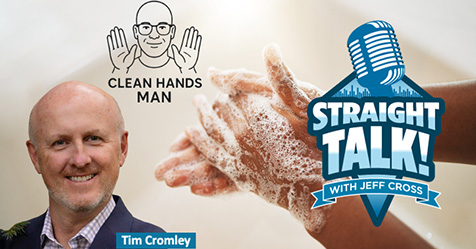Illnesses such as colds, flu, stomach upsets, and headaches are the most common causes of short-term employee absences. In fact, in the United States, the spread of these illnesses results in an average of 7.7 sick days per employee per year.
The time employees take away from the workplace annually costs employers US$225.8 billion, and in addition to the direct costs, unplanned absences cause a 54 percent decrease in productivity/output and a 39 percent drop in sales/customer service.
The numbers don’t lie. A germ-invested space can have a huge impact on company productivity, while a clean space can prevent the transmission of infectious diseases and protect human health, resulting in asset preservation, improved indoor environmental quality, decreased absenteeism, enhanced safety and health, and increased productivity of workers and students. Stated simply, a relatively modest investment in an effective cleaning and hygiene program can help to avoid or significantly reduce the health and economic impacts of infectious diseases. This results in what we call the “value of clean.”
The Cost of Germs
To best appreciate the value of clean in the realm of infection prevention, consider the economic and social costs associated with the transmission of various environmental pathogens.
Seasonal influenza in the United States alone is estimated to impose an economic burden of $87 billion a year, according to a 2007 Science Digest article, “The Annual Impact of Seasonal Influenza in the U.S.: Measuring Disease Burden and Costs.” Of this amount, more than $16 billion is attributed to lost earnings and productivity associated with ill employees. Direct medical costs account for another $10 billion per year of this total, the article says. In addition, the common flu results in 3.1 million hospitalized days and 31.4 million outpatient visits per year.
And of course, there are other infectious diseases of concern, such as Clostridium difficile (C. diff). The rate of C. diff hospital-acquired infections (HAIs) has nearly doubled in the last 10 years, and today accounts for 12 percent of all HAIs. The direct medical costs associated with C. diff are $6,000-9,000 per infection, giving rise to an estimated total of $1-1.6 billion per year of medical costs in the United States. Further cost pressures also are being imposed upon health care facilities given Medicare’s recent decision to no longer reimburse hospitals for HAIs.
When we look at the universe of infectious diseases that we contend with today—MRSA, Norovirus, Enterovirus D68, and even Ebola—it is apparent that the collective economic costs and the toll on human suffering associated with these diseases are substantial. It is in this context that we can best appreciate the value of clean as our front line of defense in preventing the transmission of infectious diseases and environmental pathogens.
How to Reduce theTransmission of Diseases
To best appreciate how an effective cleaning and hygiene program can reduce the transmission of environmental pathogens, it is important to first briefly explore how infectious diseases are spread.
Infectious diseases are generally spread through harmful microorganisms or environmental pathogens, such as viruses, bacteria, or fungi. These pathogens are spread directly from one person to another by an infected individual. In addition, diseases are spread when infected individuals touch objects, such as doorknobs, elevator buttons, hand rails, and other frequently touched surfaces, thus contaminating the object with their germs. These germs then move to another person who touches the same object and then transfers the infected material from their hands to their nose, mouth or eyes. That is why it is important to clean and disinfect frequently touched surfaces.
Effective cleaning and disinfecting of environmental surfaces, including high-touch or frequently touched surfaces (e.g., desks, countertops, faucet handles, and doorknobs), significantly decreases the number of environmental pathogens on those surfaces or objects, which in turn reduces the risk of transmission and infection. Routine cleaning removes the soil and dirt that harbors the infectious agents, while disinfecting kills the remaining environmental pathogens. Likewise, a hand hygiene program significantly reduces the germs present on a person’s hands, with a consequent reduction in the risk of disease transmission. You can learn more about hand hygiene in this month’s Tech Tip article, “Hand Hygiene: Simple as Soap and Water?”
Recommended Cleaning and Disinfection Practices
The following cleaning and disinfection practices are recommended to help prevent the spread of various infectious diseases such as the common cold and flu.
- Just clean. Do not underestimate the power of cleaning simply to reduce the risk of transmitting germs. Cleaning removes dirt, soil, and impurities that harbor germs and viruses like influenza. Routine cleaning, therefore, plays a critical role in reducing the spread of flu and other diseases. Remember cleaning is often a necessary first step in disinfecting a surface, which actually kills the remaining germs, such as influenza viruses.
- Clean and disinfect frequently touched surfaces. Daily clean and disinfect surfaces and objects that are frequently touched, such as desks, countertops, doorknobs and faucet handles. Frequency may be increased when there is a known outbreak.
- Clean and disinfect surfaces when appropriate. It’s important to match your cleaning and disinfecting activities to the types of germs you want to remove or kill. For example, studies have shown that the flu virus can live and potentially infect a person for only 2 to 8 hours after being deposited on a surface. Therefore, if your goal is to slow the spread of flu, it is not necessary to close facilities in order to clean or disinfect every surface.
- Select an appropriate product. When selecting a disinfectant, read the label to make sure it states the U.S. Environmental Protection Agency (EPA) has approved the product for the environmental pathogen of concern. For example, for the flu, select products that are effective against the influenza A virus.
If a surface is not visibly dirty, you can clean it with an EPA-registered product that both cleans (removes germs) and disinfects (kills germs) instead. Be sure to read the label directions carefully, as there may be a separate procedure for using the product as a cleaner or as a disinfectant.
Use disinfecting wipes on electronic items that are touched often, such as phones and computers. Pay close attention to the directions for using disinfecting wipes. It may be necessary to use more than one wipe to keep the surface wet for the stated length of contact time. Make sure that the electronics can withstand the use of liquids for cleaning and disinfecting.
- Clean and disinfect correctly. As mentioned in the previous tip, always follow label directions on cleaning products and disinfectants. It is important to note the directions on most disinfectant products require the surface to first be cleaned.
On a similar note, follow the label directions on the disinfectant for dwell time—the amount of time necessary for the disinfectant to reside on the surface in order to effectively kill the germs. Make sure the surface remains wet during the dwell time to properly disinfect and kill the germs. Therefore, you may wish to select disinfectants that have shorter dwell times compared to other competing products.
- Use products safely. Ensure that custodial staff and others who use cleaners and disinfectants read all instruction labels and understand safe and appropriate use. This might require that instructional materials and training be provided in other languages.
The Value of Clean Proposition
Whether you work for a school, hospital, or a corporation, the impact of a clean space stretches beyond appearance. Cleaning for infection prevention can greatly impact both employee performance and an organization’s bottom line.
To further help the industry understand the critical role proper cleaning plays in protecting human health from infectious agents, ISSA, the worldwide cleaning industry association, has compiled a number of online resources in its “Cleaning for Infection Prevention” web pages. Learn more at www.issa.com/infectionprevention.
These pages include information you can use to combat recent infectious outbreaks such as Influenza A, Enterovirus D68, and Ebola. Additionally, you will find a free download of the association’s Cleaning for Infection Prevention: Cold and Flu guide, which features additional health information, cleaning best practices, communication tips, and related resources.




